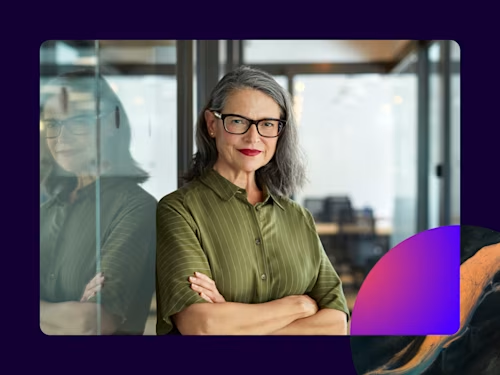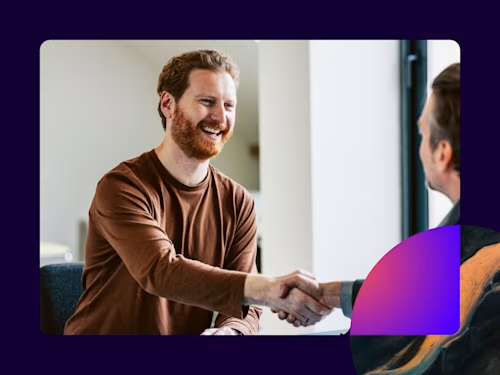
A Secure Ecosystem Built on Trust
Emily Heath, chief trust and security officer at Docusign, shares her concept of trust and security and how to build trust in your ecosystem.

There’s never been a better time to consider the importance of security—and the outsized role that trust plays in it. While organizations of all sizes are now prioritizing security, the swift onset of digital transformation, cloud adoption and hybrid/remote workforces over the last 18 months has left many unprepared for persistent and increasing cyber threats.
If your company is like most, it’s part of a much larger ecosystem of employees, partners, vendors and customers that have unique security approaches and requirements. Unfortunately, your security is only as strong as the weakest part of that ecosystem.
There are many tangible technologies and tools to help address these challenges. But don’t overlook an intangible essential: trust, built on transparent and honest communication between people.
The concept of trust
It’s important to differentiate trust from security. The latter is about the prescriptive and protective actions we take, like implementing two-factor authentication or requiring a badge swipe to enter secure areas.
Although you can’t touch or see trust, it’s certainly more than just a feeling. Trust forms the basis of all our relationships. People are behind every agreement, every transaction, and every ecosystem. We’re in the people business first and foremost. Without trust, it’s incredibly difficult to be successful.
Trust creates an ever-changing dynamic between people. It takes work to nurture trust, to keep it growing. Certainly, acting in bad faith is one of the many ways to damage that relationship. But what builds trust?
Honesty. Transparency. Integrity. Humility. Competency. The list goes on, but these qualities are at the core of trust. It’s about making promises, acting with noble intentions and following through on them. And, perhaps most importantly, it’s about admitting when you’ve made an error, and then working to correct it and learn from it.
It may seem odd in a business forum to read about the importance of building trusted relationships. But this concept of trust isn’t just relevant for personal matters. It’s absolutely critical that your company—and more specifically, you—make a commitment to build trust in all your professional relationships: with employees, vendors, partners, patients, students, constituents, customers and more.
Security is the driver. Trust is the differentiator.
From boardrooms to breakouts, security is a hot topic. No company is truly inoculated against constant and malicious threats. And it’s never been easier for bad actors to launch increasingly sophisticated cyber attacks.
Thankfully, there’s plenty of opportunity amid these security concerns. Security is only the beginning of the conversation, and it’s not exclusively an external issue. To reach—and sustain—a truly secure ecosystem, you need all hands on deck.
Your company’s solid foundation forms the basis for your robust security portfolio. Start on the inside and work your way out. Establish a culture of transparency and trust with employees, then move to partners and vendors.
Every person in your ecosystem is responsible for its overall health and security. Leaders have to be accountable for showing how each person’s actions can have a positive or negative impact on that end goal. Select vendors and partners who share these same values, and customers will select you.
Assess risk and build trust in your ecosystem
Trust is a two-way street. Given all the different players in your ecosystem—and the sensitive information shared between them—you need to trust that each of them takes security as seriously as you do. Nurturing trust in these relationships requires transparent and honest communication.
You still need a well-documented and ongoing evaluation system for your ecosystem vendors, but building trust goes beyond data. The human element is more important for this relationship than the numbers.
Three tips for building trust within your ecosystem
First and foremost, you obviously have to know where each of your vendors stands on security. For that to happen, they have to be willing to share their current posture, including where they may have vulnerabilities. Set the tone by sharing everything about your security situation. Radical transparency strengthens the bonds of trust within the ecosystem and improves its overall security posture.
Make it a point to know your vendors’ names, what they’re responsible for, and their strengths and weaknesses. When something inevitably goes wrong, you’ll already have a personal relationship established. It’s much easier to work through challenges collaboratively when that’s the case. And coming through adversity together breeds familiarity and builds trust.
Combine real-time intelligence tools with the soft skills of relationship building to rank each of your vendors. Spend more time educating those struggling to deliver, and consider interconnecting your vendor community for knowledge sharing when it makes sense.
Ultimately, trust is about people. It’s built not just on what you do, but on who you are while you’re doing it. That’s a true competitive differentiator.
If you’d like to hear more about security and trust, don’t miss my roundtable discussion, “Beyond Security: The Importance of Vendor Trust and Data Security,” with security experts from Okta, Netskope, Carrier Global and Wiz.io. We dive deep into their approaches to mitigating risk, protecting data and building trust within their ecosystems.
Related posts
 Insights for LeadersUpdated 11 Mar 2025
Insights for LeadersUpdated 11 Mar 2025 Insights for LeadersPublished 11 Feb 2025
Insights for LeadersPublished 11 Feb 2025Become an Account Management Hero with Docusign Admin Tools

How AI Is Changing the Customer Experience Landscape

Become an Account Management Hero with Docusign Admin Tools
Discover what's new with Docusign IAM or start with eSignature for free

